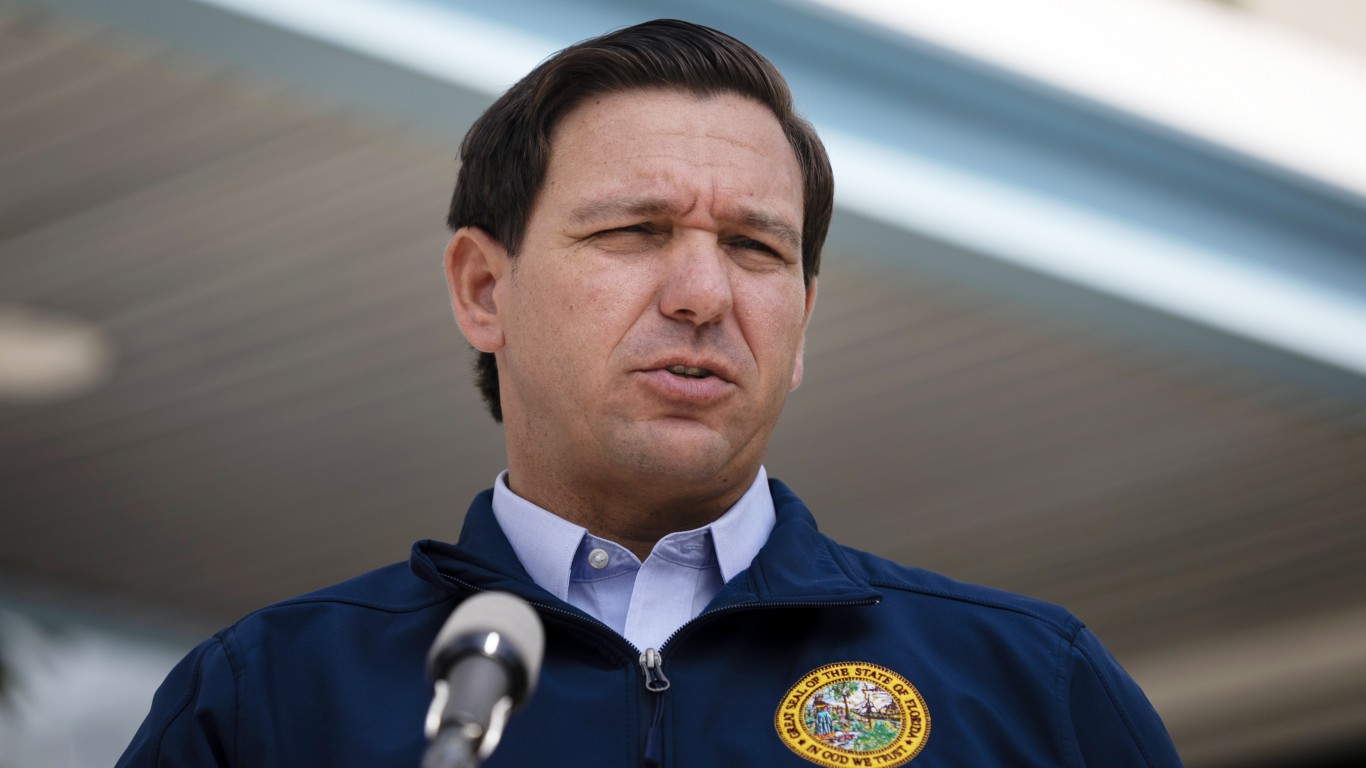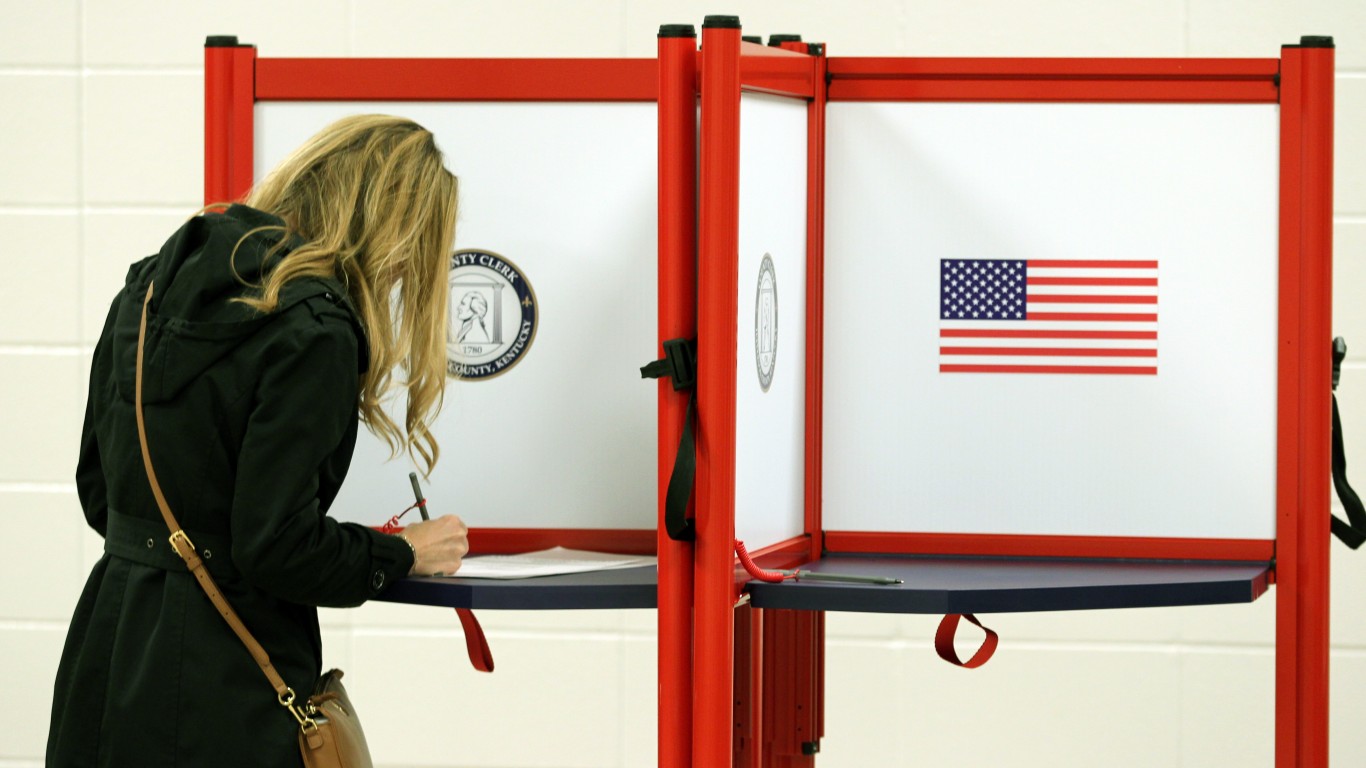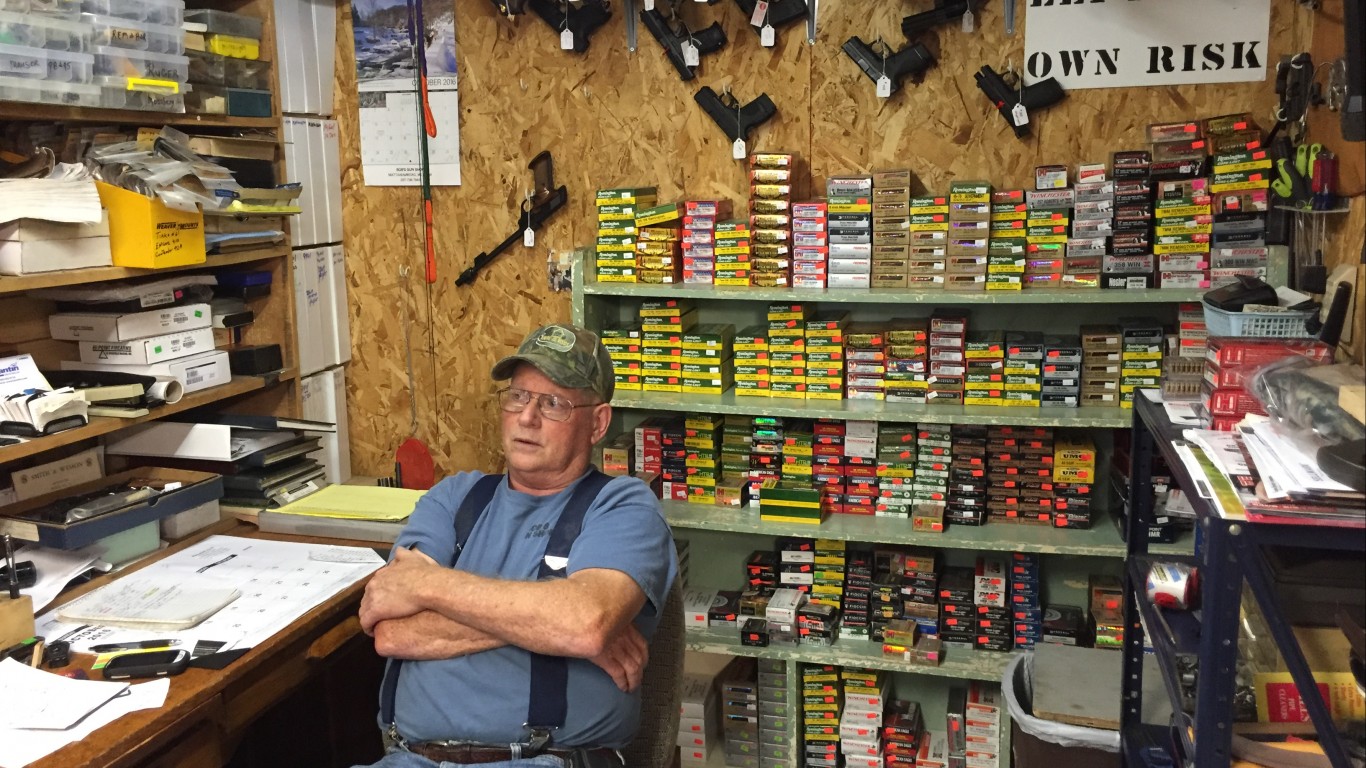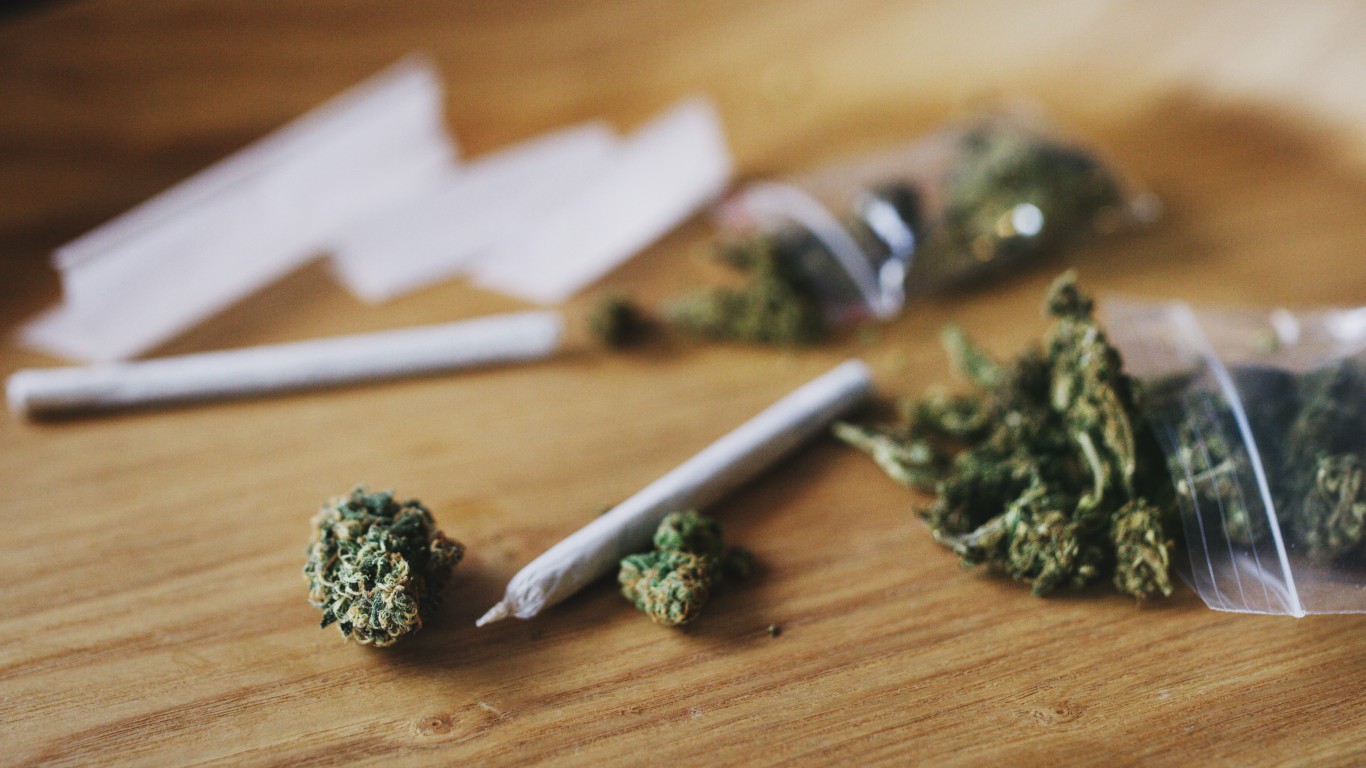
Nineteen states, Washington, D.C., and Guam have legalized marijuana for recreational use by adults. Could there be more “lighting up” in the coming years? Currently, several states such as Ohio and Delaware are mulling legislation to legalize recreational cannabis for adults. (Check out the best movies and shows about weed you can watch online now.)
Even in those states that haven’t yet made recreational use of marijuana legal, lawmakers have decriminalized possession of small amounts of weed, which could be the first step toward full legalization. However, decriminalization doesn’t mean possession and use of non-medical cannabis is legal; it just means the state now classifies small possessions as not worthy of prosecution or jail, although it does impose minimal fines, similar to a minor traffic violation. Larger amounts of cannabis may carry stiffer penalties.
And just because a state legalizes recreational cannabis use doesn’t mean residents can go out and light up a joint. There are still rules about how much you can consume and where. States typically set down a process by which retailers are granted permits and supervised, and it takes time to write the rules.
For example, Connecticut became the 19th state to legalize adult recreational marijuana in July. But retail dispensaries likely won’t be up and running until next year. Meanwhile, investors get no buzz from marijuana legalization.
Even in states with legal cannabis, selling marijuana outside of the state laws and regulations is illegal. States want residents to buy the weed from safe sources, and of course, the state gets to tax the legal sales. According to a report from the Marijuana Policy Project, states that have legalized cannabis for adult use have raked in a total of $8 billion in tax revenues since 2014. This is how much every state can make from legalized marijuana.
Currently, 36 states, the District of Columbia, Puerto Rico, and the U.S. Virgin Islands have varying laws permitting the use of medical marijuana for different medical conditions, such as chronic pain, epilepsy, and glaucoma, among others. Medicinal cannabis is available only through a prescription, and many states limit the supply a patient can obtain. States also regulate the cultivation and sale of medical marijuana, and cannabis dispensaries are tightly supervised.
The 15 states on this list have either already legalized recreational pot use but have yet to set up selling mechanisms or they have legislation that is currently being considered. Other states have already approved medical marijuana use and/or have decriminalized possession of small amounts of cannabis.
Click here to see the next states to legalize recreational marijuana
To identify the states most likely to legalize recreational marijuana use in the coming years, 24/7 Wall St. reviewed existing marijuana laws and statements from elected officials in states where cannabis has been decriminalized and permitted for medical purposes. State marijuana laws and regulations came from advocacy groups National Organization for the Reform of Marijuana Laws and DISA Global Solutions. Other sources used include Weedmaps, the Marijuana Policy Project, FindLaw, as well as local sources.
The percentage of the population using marijuana was calculated using the population using marijuana in the past year from the Department of Health & Human Services’ National Survey on Drug Use and Health 2018-2019 average and the population 18 and over from the Census Bureau’s American Community Survey 2019 1-Year Estimates. Tax collections per capita come from the Tax Foundation Facts and Figures for 2019.
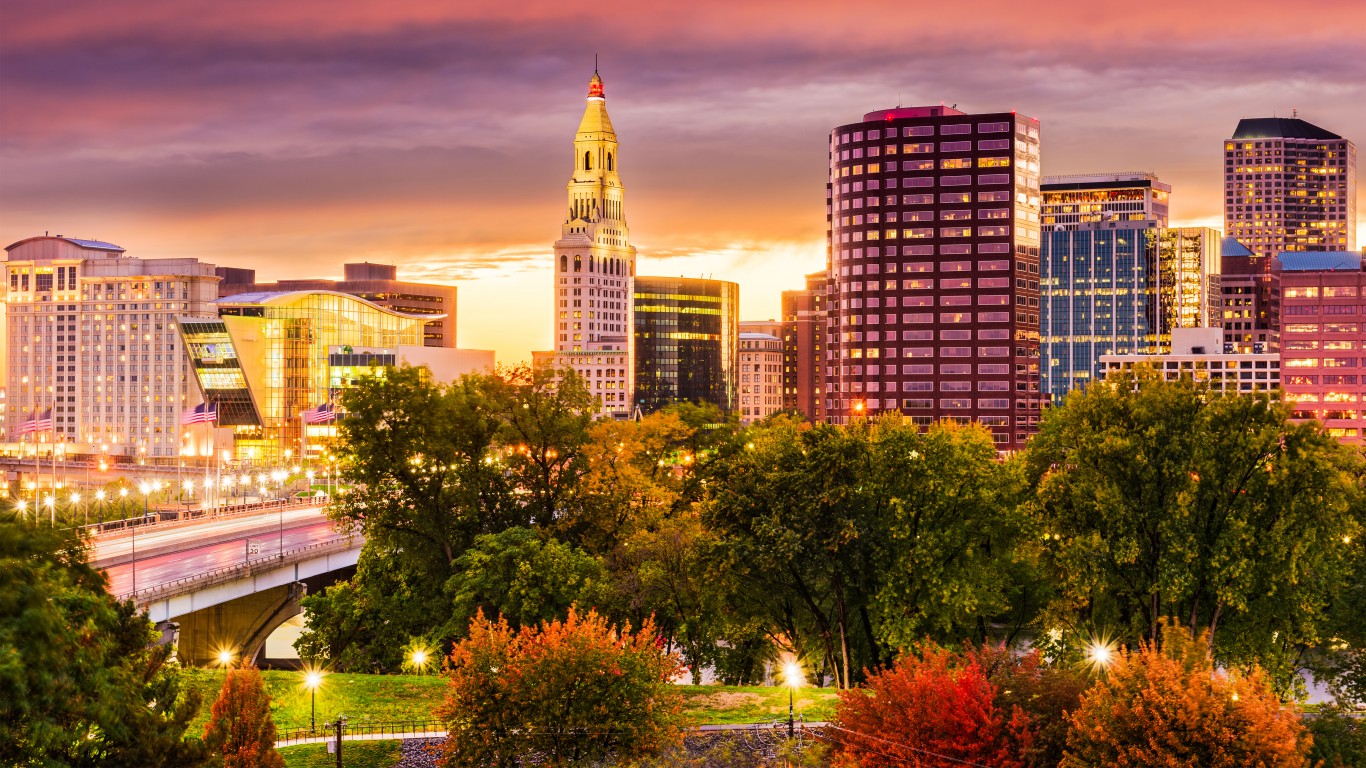
1. Connecticut
> 18 and over population: 2,837,855
> Annual marijuana use — 18 and older: 19.2% — 15th highest
> State and local tax collections per capita, 2018: $8,494 — 10th highest
As of July 1, Connecticut became the 19th state to legalize adult recreational use of marijuana. Adults 21 years and older can possess up to 1.5 ounces (42.5 grams) of cannabis. This latest law follows the state’s legalization of medical marijuana use in 2012. The state is currently working on an application process for people wanting to enter the marijuana sales business, which reportedly will take a year.
[in-text-ad]
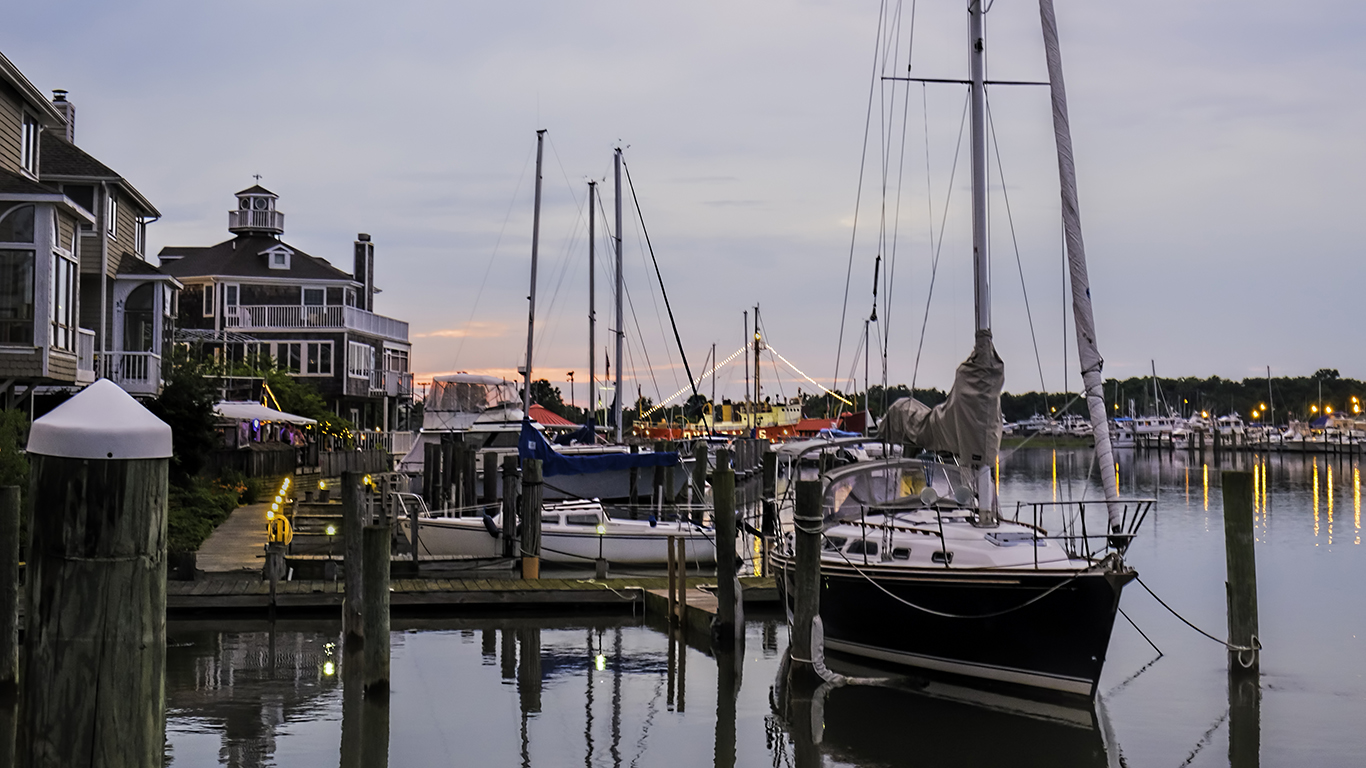
2. Delaware
> 18 and over population: 769,818
> Annual marijuana use — 18 and older: 18.1% — 16th highest
> State and local tax collections per capita, 2018: $5,525 — 5th highest
Delaware has permitted medical marijuana use since 2011. In 2014, the state classified possession of less than 6.2 ounces (175 grams) of marijuana as a misdemeanor and possession of less than 1 ounce (28 grams) a civil infraction.
Two Delaware House of Representatives committees approved a bill to legalize, tax, and regulate cannabis for adults, but was two votes short of passage in March 2022 in the House. The sponsor of the failed bill split the bill in two parts which would make it legal to have up to an ounce of weed for personal and recreational use.
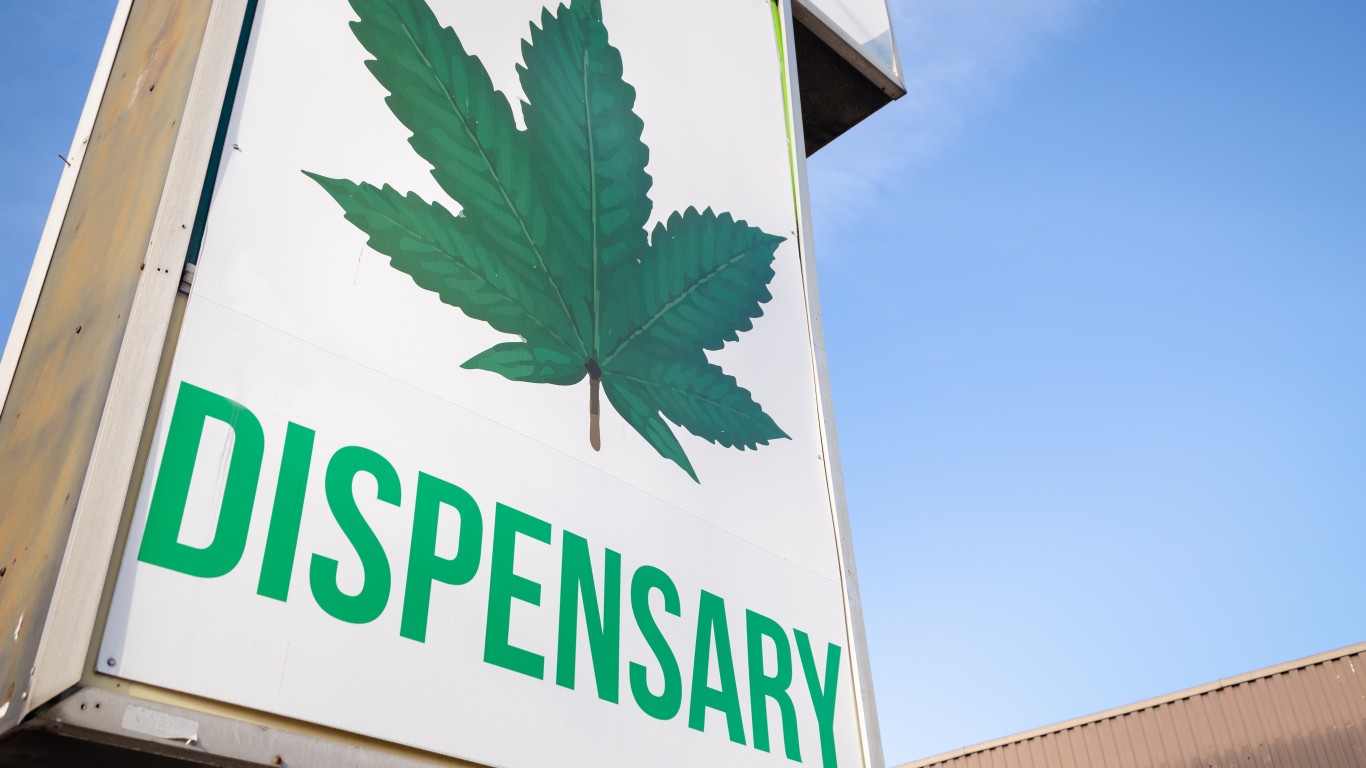
3. Hawaii
> 18 and over population: 1,115,685
> Annual marijuana use — 18 and older: 15.3% — 25th lowest
> State and local tax collections per capita, 2018: $7,332– 4th highest
In 2000, Hawaii was the first state to legalize medical marijuana through state legislature, rather than ballot measures. However, the Aloha State has yet to approve recreational use of marijuana. Two bills — one to expand the decriminalization of marijuana possession and another legalizing recreational cannabis — have failed in the state Legislature at this time.
The state in 2019 lowered the penalties for small amounts of marijuana. Residents found to have 3 grams or less of cannabis face a $150 fine rather than the previous penalty of 30 days in jail and a $1,000 fine.
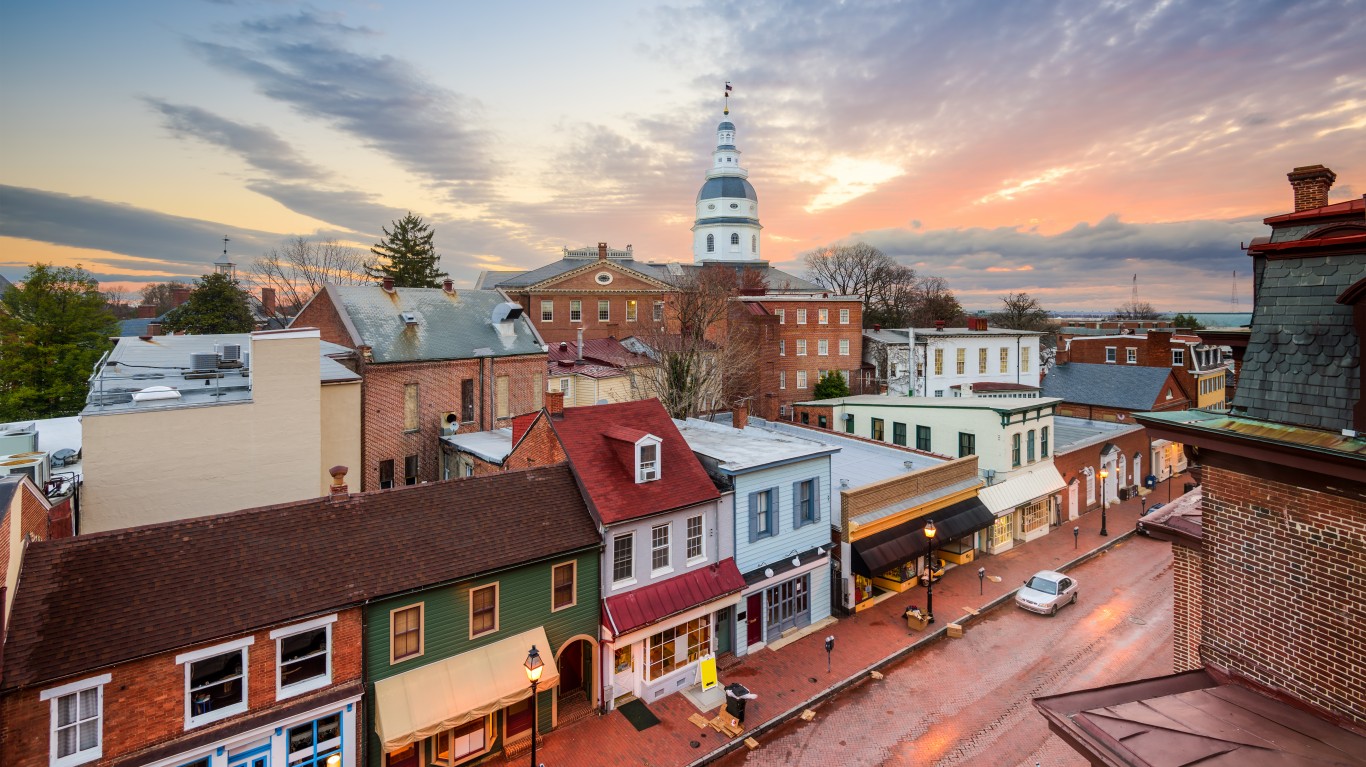
4. Maryland
> 18 and over population: 4,713,393
> Annual marijuana use — 18 and older: 16.1% — 22nd highest
> State and local tax collections per capita, 2018: $6,527 — 20th highest
Maryland permits medical use of cannabis with patients and caregivers registered with the Maryland Medical Cannabis Commission. Recreational use remains illegal. Residents possessing less than 10 grams of marijuana for personal use will be fined $100. Penalties increase on subsequent offenses, with a fourth offense resulting in one year in prison and a $1,000 fine.
[in-text-ad-2]
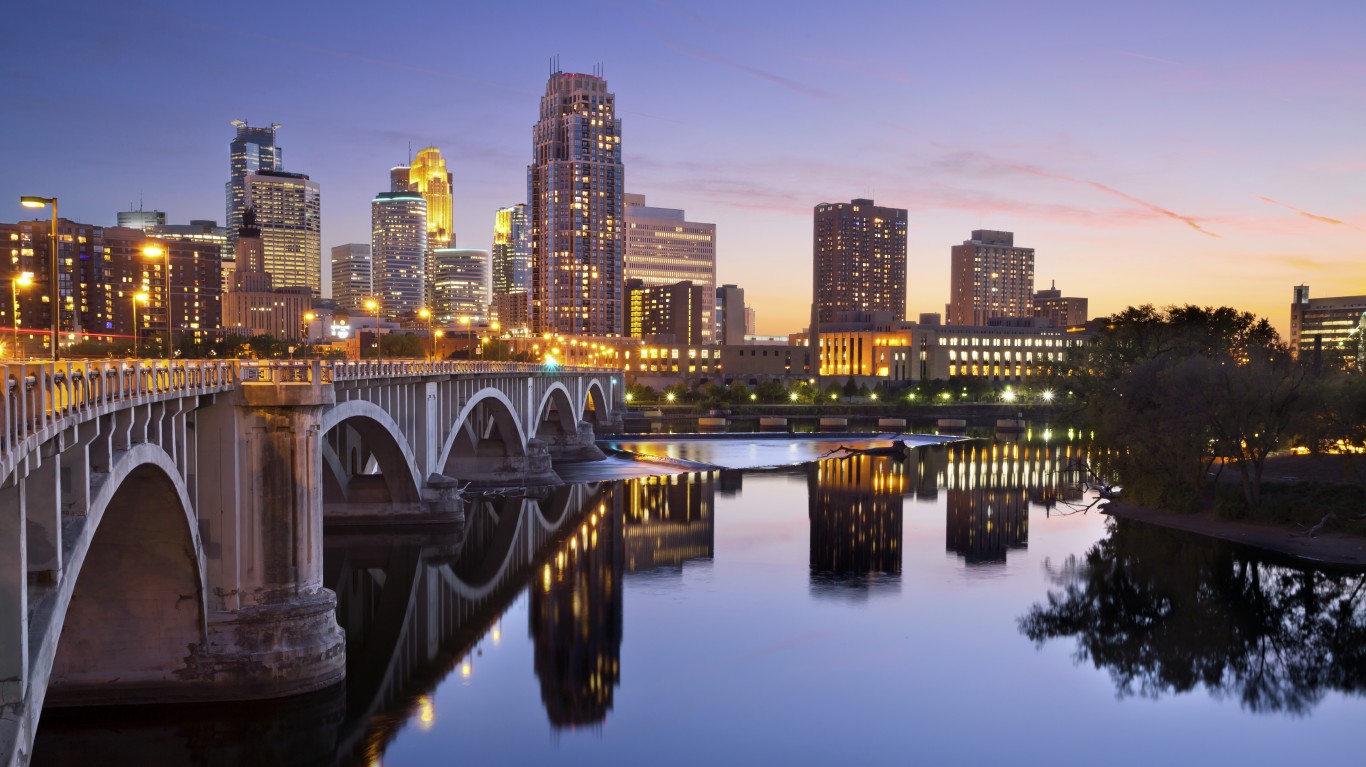
5. Minnesota
> 18 and over population: 4,336,963
> Annual marijuana use — 18 and older: 16.7% — 18th highest
> State and local tax collections per capita, 2018: $6,418 — 15th highest
Minnesota Gov. Tim Waltz signed in May a bill to legalize medical cannabis use for patients 21 years or older. The State House of Representatives passed a bill in May to legalize recreational marijuana, but the measure stalled in the State Senate.
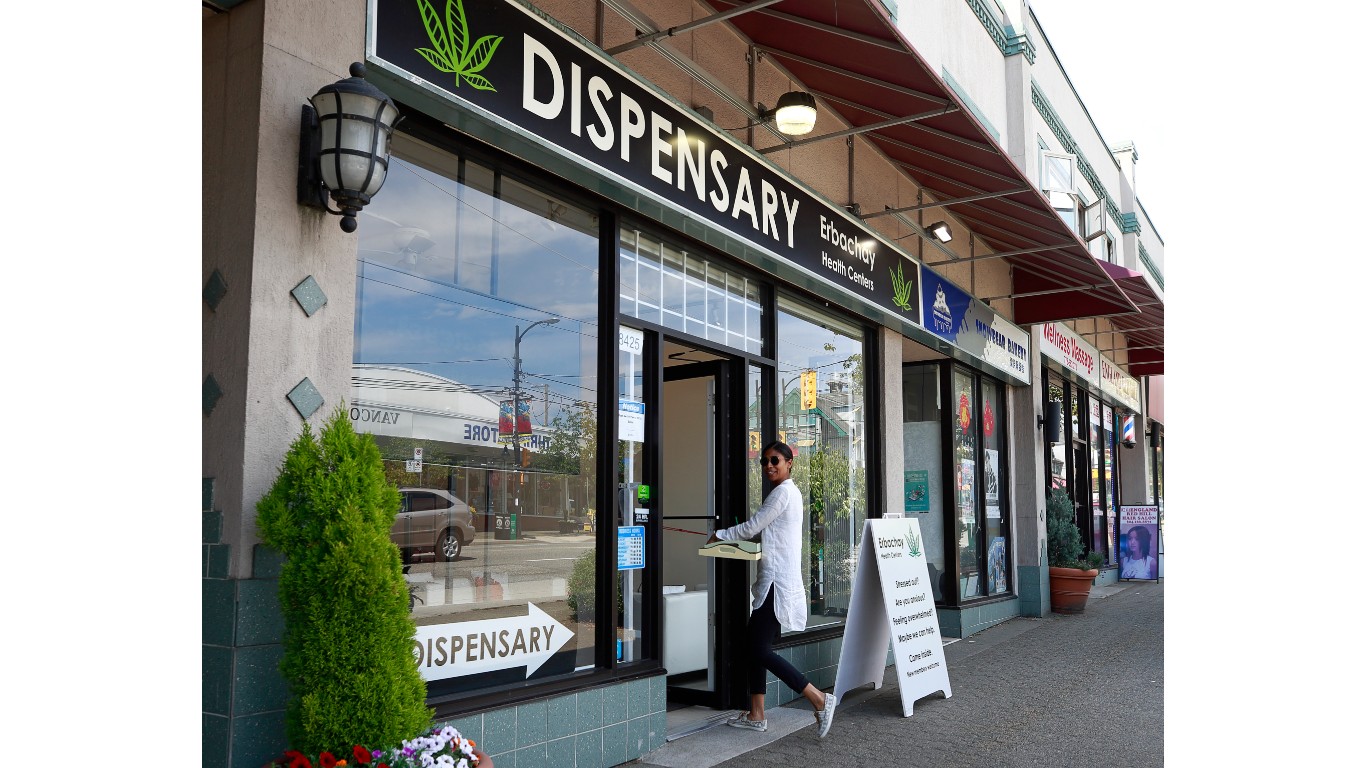
6. Mississippi
> 18 and over population: 2,277,729
> Annual marijuana use — 18 and older: 12.0% — 2nd lowest
> State and local tax collections per capita, 2018: $3,767 — 22nd lowest
Although voters approved a proposal to legalize medical marijuana, the state’s Supreme Court voided the measure on a technicality, so medical cannabis remains illegal in Mississippi. Yet possession of small amounts of marijuana has been decriminalized. Possession of up to 30 grams (1 ounce) of cannabis or synthetic cannabinoids carries a fine of between $100 to $250 for a first offense.
[in-text-ad]
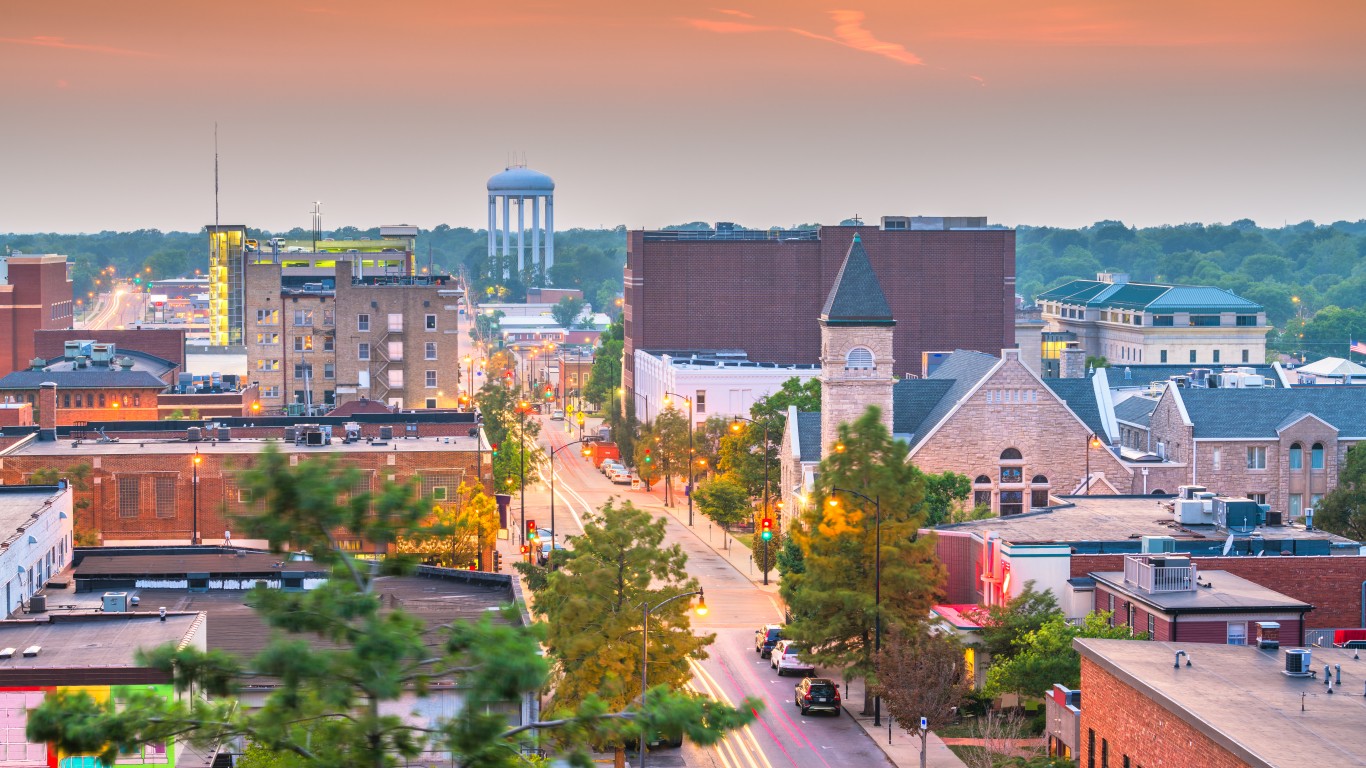
7. Missouri
> 18 and over population: 4,764,733
> Annual marijuana use — 18 and older: 14.9% — 22nd lowest
> State and local tax collections per capita, 2018: $3,970 — 6th lowest
Medical marijuana has been legal in Missouri since 2018, with 65.5% of Missourians approving an amendment to allow cannabis for medical use. Advocates are reportedly trying to get a ballot initiative for recreational cannabis up for a vote in 2022. In 2014, the Show Me State legislature passed a bill to decriminalize the possession of 10 grams or less of marijuana. The offense is classified as a criminal misdemeanor and punishable only by a fine.
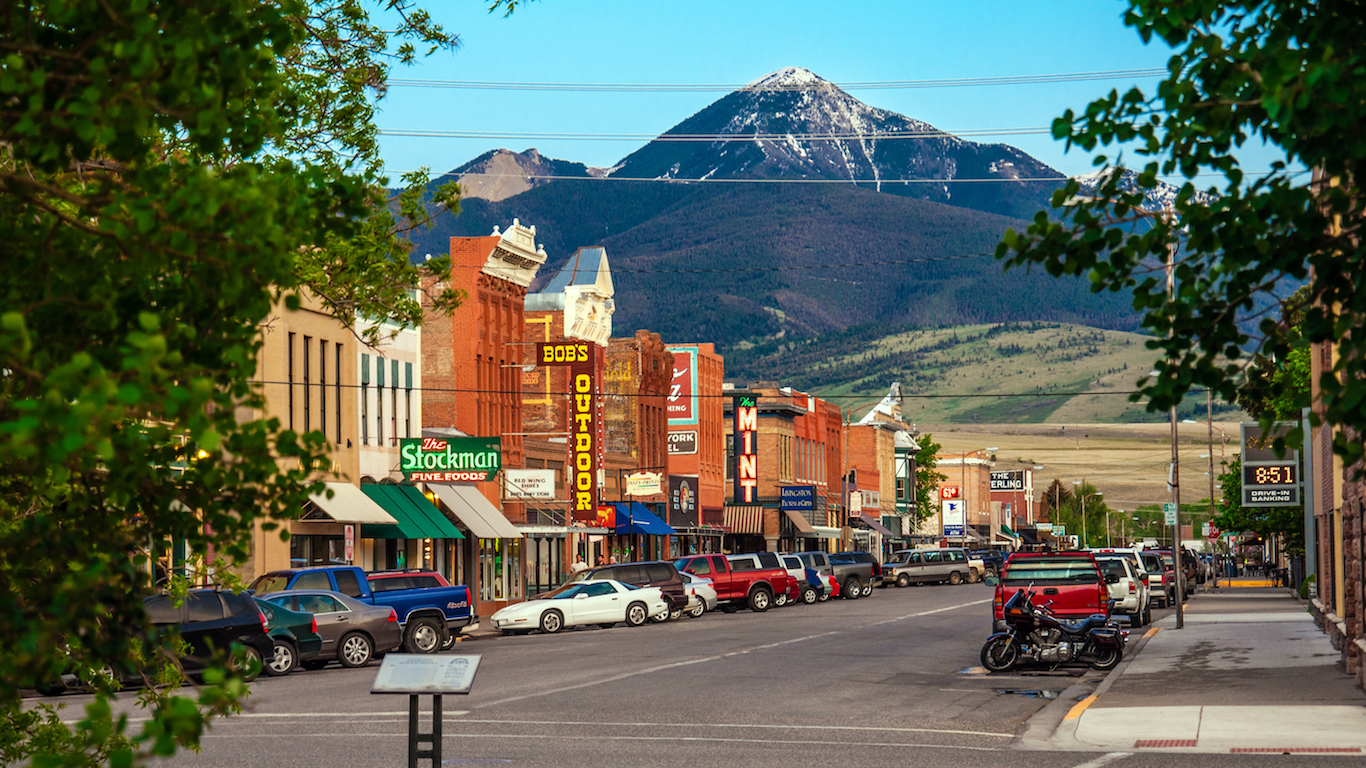
8. Montana
> 18 and over population: 842,254
> Annual marijuana use — 18 and older: 19.9% — 14th highest
> State and local tax collections per capita, 2018: $4,263 — 22nd highest
Montana was one of the first states to legalize medical marijuana in 2004. In 2011, there was a legislative push to overturn the law, but Gov. Brian Schweitzer vetoed the measure. After a new initiative was approved by voters on Nov. 3, 2020, as of Jan. 1, 2021, Montana residents age 21 and older can possess, use, and grow up to 1 ounce of marijuana. However, possession of more than 1 ounce (28 grams) of cannabis or 8 grams of concentrate is considered a felony that carries a penalty of up to five years in jail and a fine of up to $5,000.
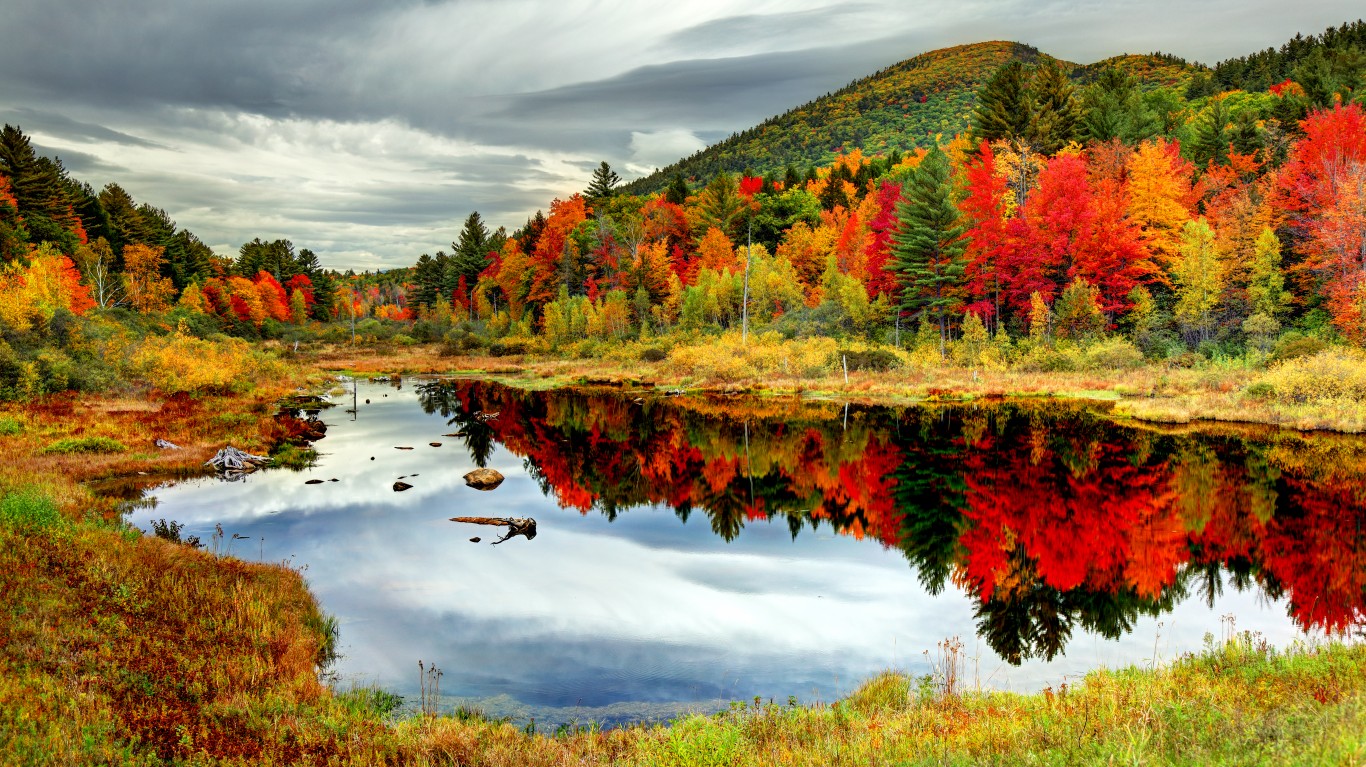
9. New Hampshire
> 18 and over population: 1,103,691
> Annual marijuana use — 18 and older: 21.6% — 10th highest
> State and local tax collections per capita, 2018: $5,272 — 10th lowest
Since 2013, medical marijuana has been legal in New Hampshire. Recreational use remains illegal, but cannabis possession has been decriminalized. Possession of 21 grams of cannabis or cannabis infused products with no more than 300 milligrams of THC (tetrahydrocannabinol, the active ingredient in cannabis that causes the “high”), or up to 5 grams of hash, carries a fine of $100 for the first and second offense. For a third offense, the fine increases to $300.
[in-text-ad-2]
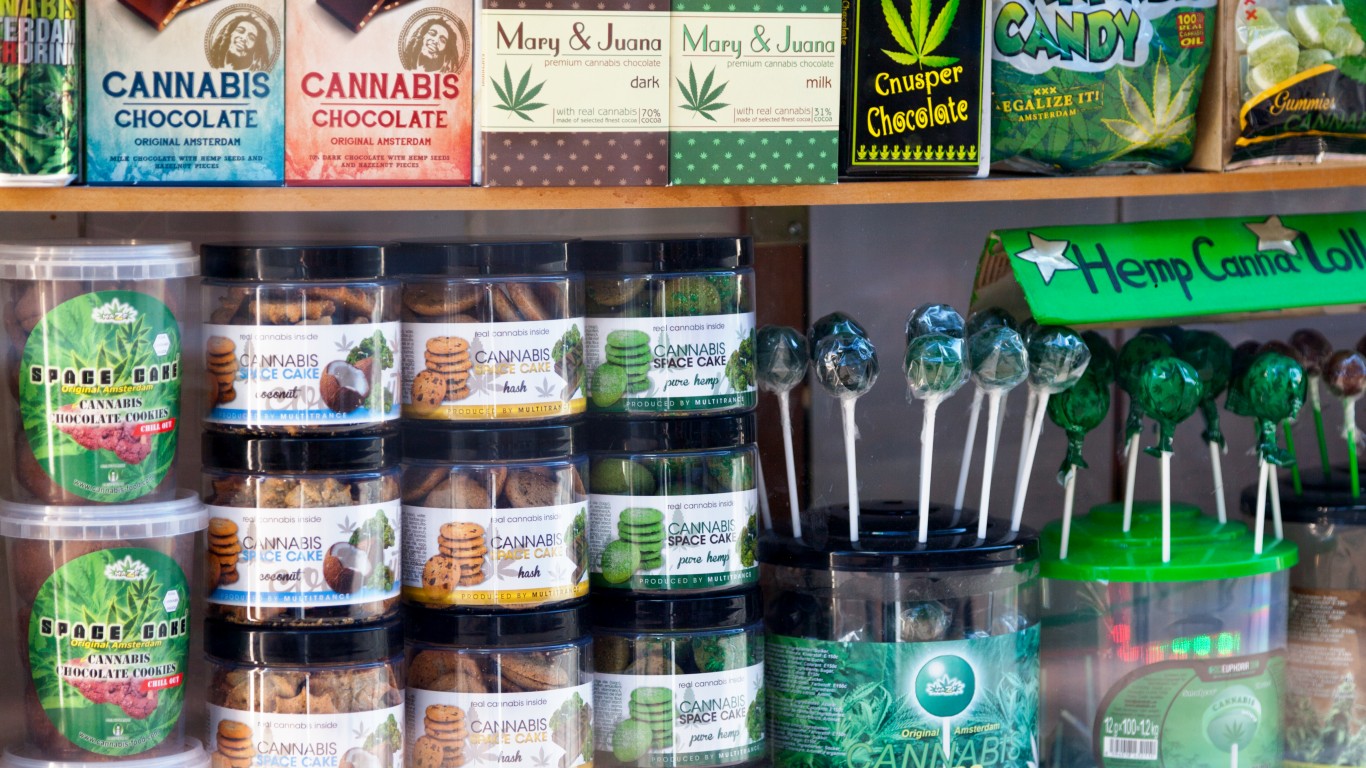
10. New Mexico
> 18 and over population: 1,622,979
> Annual marijuana use — 18 and older: 20.1% — 12th highest
> State and local tax collections per capita, 2018: $4,134 — 6th highest
In 1978, New Mexico passed the Controlled Substances Therapeutic Research Act, allowing the first medical use of cannabis, but only through a research program. In April, the state expanded cannabis legislation to adult recreational use.
Adults 21 and older can purchase, possess, consume, and give away to other adults up to 2 ounces (56 grams) of cannabis flower, 16 grams of concentrate, and 800 milligrams of edibles. Residents can also cultivate 12 mature plants per household. The state is currently ramping up licensing procedures and rules for marijuana businesses.
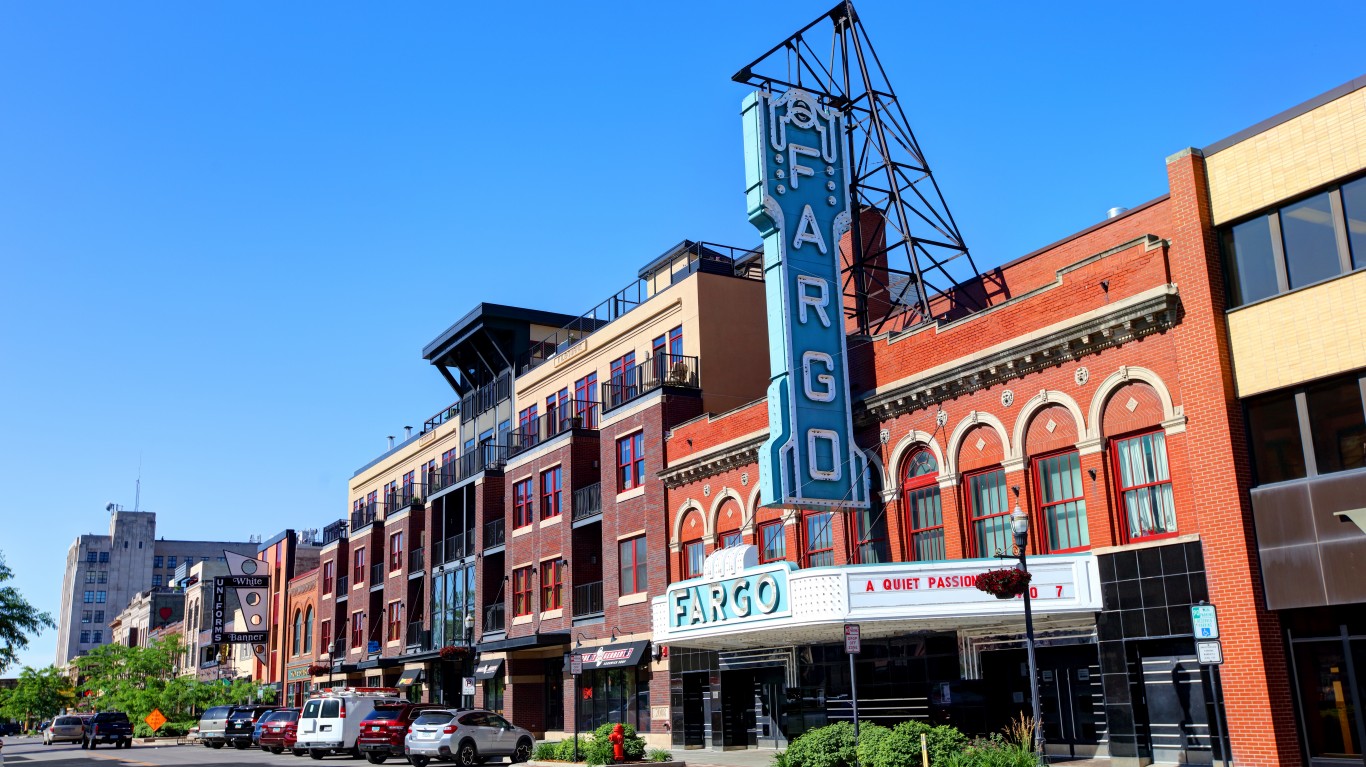
11. North Dakota
> 18 and over population: 585,356
> Annual marijuana use — 18 and older: 12.5% — 8th lowest
> State and local tax collections per capita, 2018: $7,611 — 2nd highest
North Dakota allows medical marijuana for qualifying conditions and has decriminalized small amounts of cannabis. Possession of less than 0.5 ounces results in no jail time and a fine of up to $1,000 for a first offense. Ingesting marijuana is considered a Class B misdemeanor with a fine of up to $1,500 and incarceration of up to 30 days.
A bill passed in 2021 in the state House of Representatives would have permitted adults 21 and older to possess and purchase up to 1 ounce of cannabis for personal use, but home cultivation would be prohibited. The bill failed in the State Senate. Proponents are now attempting to get an amendment to legalize recreational marijuana use on the ballot in 2022, although a similar push was rejected by voters in 2018.
[in-text-ad]

12. Ohio
> 18 and over population: 9,114,253
> Annual marijuana use — 18 and older: 15.9% — 23rd highest
> State and local tax collections per capita, 2018: $4,640 — 17th lowest
Medical marijana was legalized in Ohio in 2016. Yet a proposal to legalize recreational cannabis use is currently winding its way through the legislative process in the state. In August, the state’s attorney general approved the language in a petition to legalize marijuana use and sales in Ohio. It would make it legal for adults age 21 or older to buy and possess 2.5 ounces of marijuana or grow up to six plants in their homes.
The petition will be reviewed by the Ohio Ballot Board. If approved by the board, the measure must get 133,000 valid signatures before it’s submitted to the Legislature to act on the proposed law. The proposal could also be placed on a ballot initiative if the Legislature doesn’t act.

13. Rhode Island
> 18 and over population: 855,786
> Annual marijuana use — 18 and older: 23.4% — 8th highest
> State and local tax collections per capita, 2018: $5,789 — 12th highest
Rhode Island approved cannabis for medical purposes in 2006. The State Speaker of the House Joe Shekarchi (D) has told Public’s Radio legislators are coming with “workable” solutions to possibly legalize cannabis that could be debated during a special session. Recently, lawmakers from both the Senate and the House unveiled a bill that would legalize marijuana and create licensed businesses that would produce and sell cannabis to adults 21 and older. They can possess no more than an ounce.
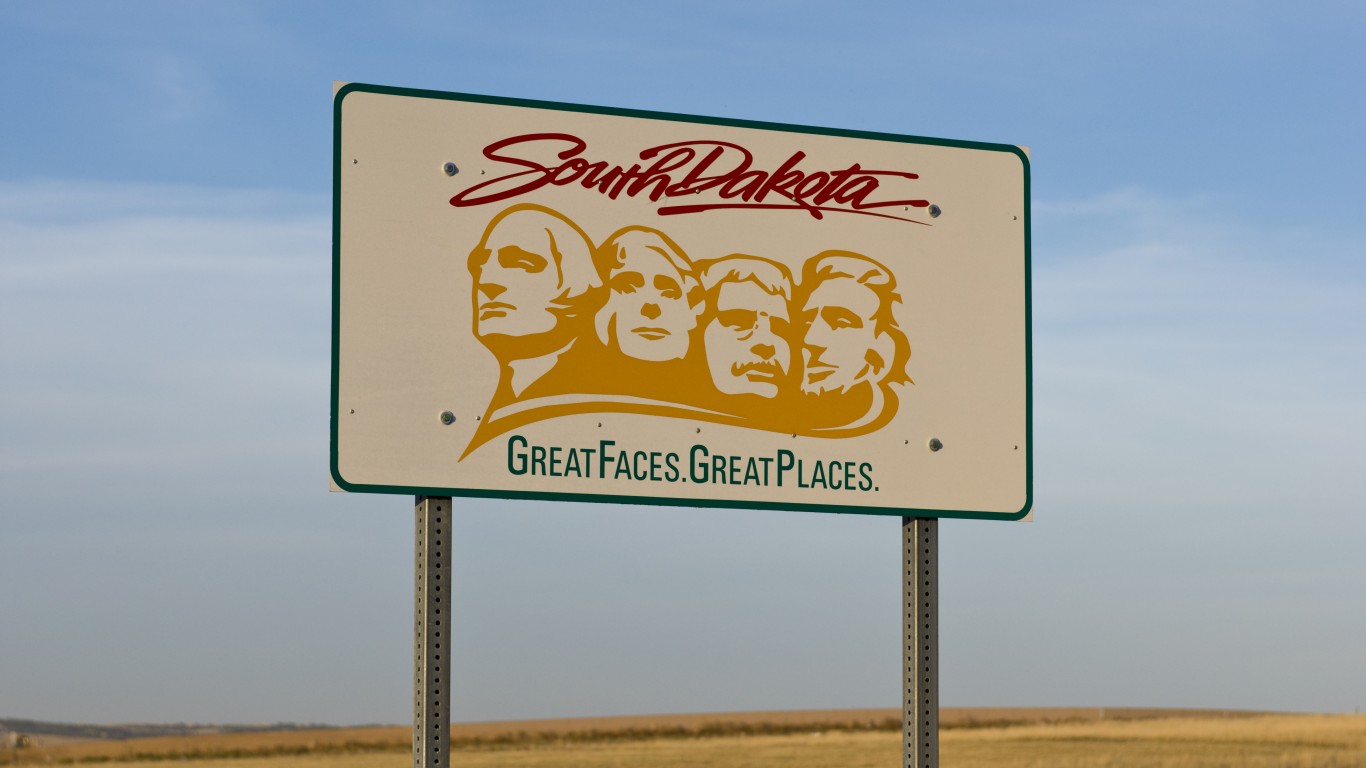
14. South Dakota
> 18 and over population: 669,390
> Annual marijuana use — 18 and older: 10.9% — the lowest
> State and local tax collections per capita, 2018: $4,327 — 4th lowest
In 2020 voters approved a legislation legalizing cannabis, but the reform was struck down by the state Supreme Court after Gov. Kristi Noem challenged the recreational use amendment. Most recently, the South Dakota House rejected a bill to legalize marijuana. The House also rejected legislation to gut existing protections for patients using medical marijuana.
[in-text-ad-2]
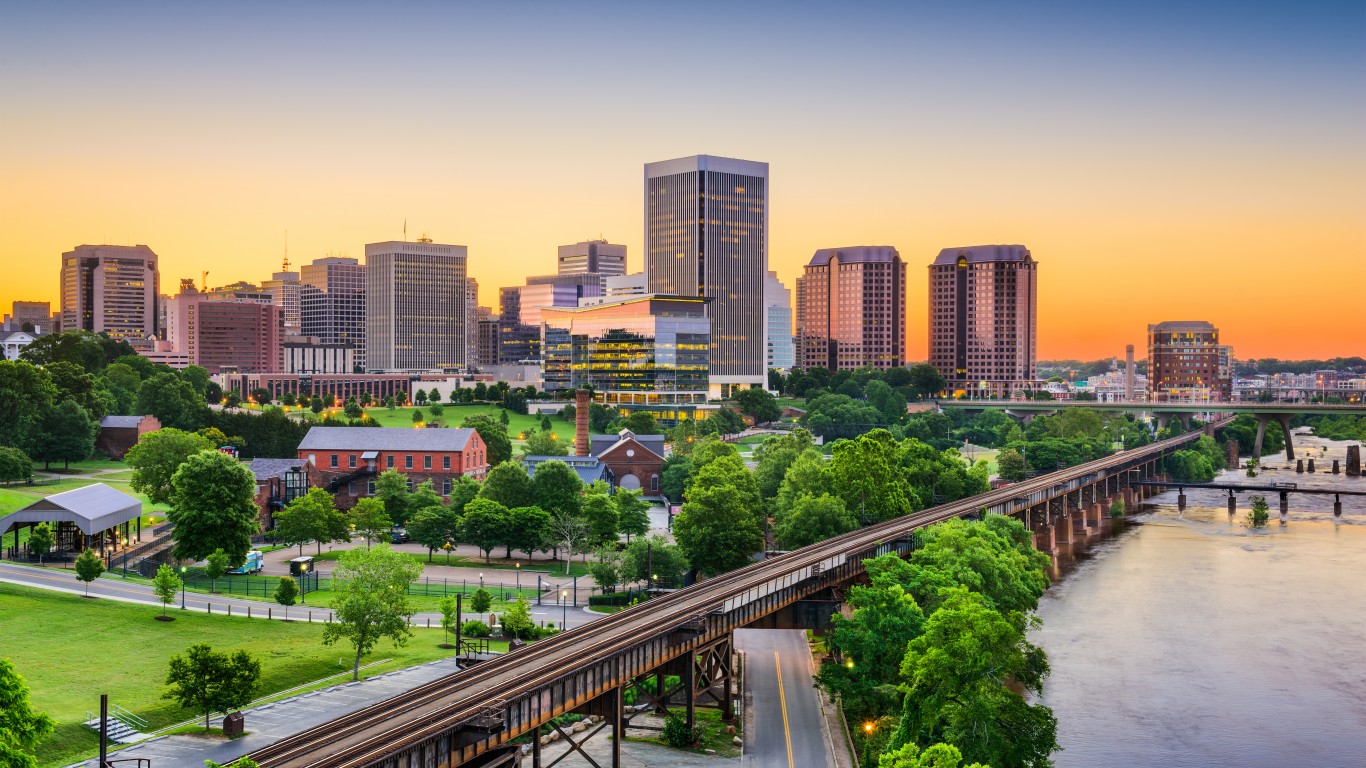
15. Virginia
> 18 and over population: 6,677,914
> Annual marijuana use — 18 and older: 12.1% — 4th lowest
> State and local tax collections per capita, 2018: $4,994 — 20th lowest
Although Virginians 21 and older can legally possess up to 1 ounce of cannabis, the state currently has no retail outlets for purchase. As of now, residents would need a prescription for medical use and obtain cannabis from a medical dispensary. Advocates want to speed up the launch of retail sales before the scheduled 2024 start date.
It’s Your Money, Your Future—Own It (sponsor)
Are you ahead, or behind on retirement? For families with more than $500,000 saved for retirement, finding a financial advisor who puts your interest first can be the difference, and today it’s easier than ever. SmartAsset’s free tool matches you with up to three fiduciary financial advisors who serve your area in minutes. Each advisor has been carefully vetted and must act in your best interests. Start your search now.
If you’ve saved and built a substantial nest egg for you and your family, don’t delay; get started right here and help your retirement dreams become a retirement reality.
Thank you for reading! Have some feedback for us?
Contact the 24/7 Wall St. editorial team.
